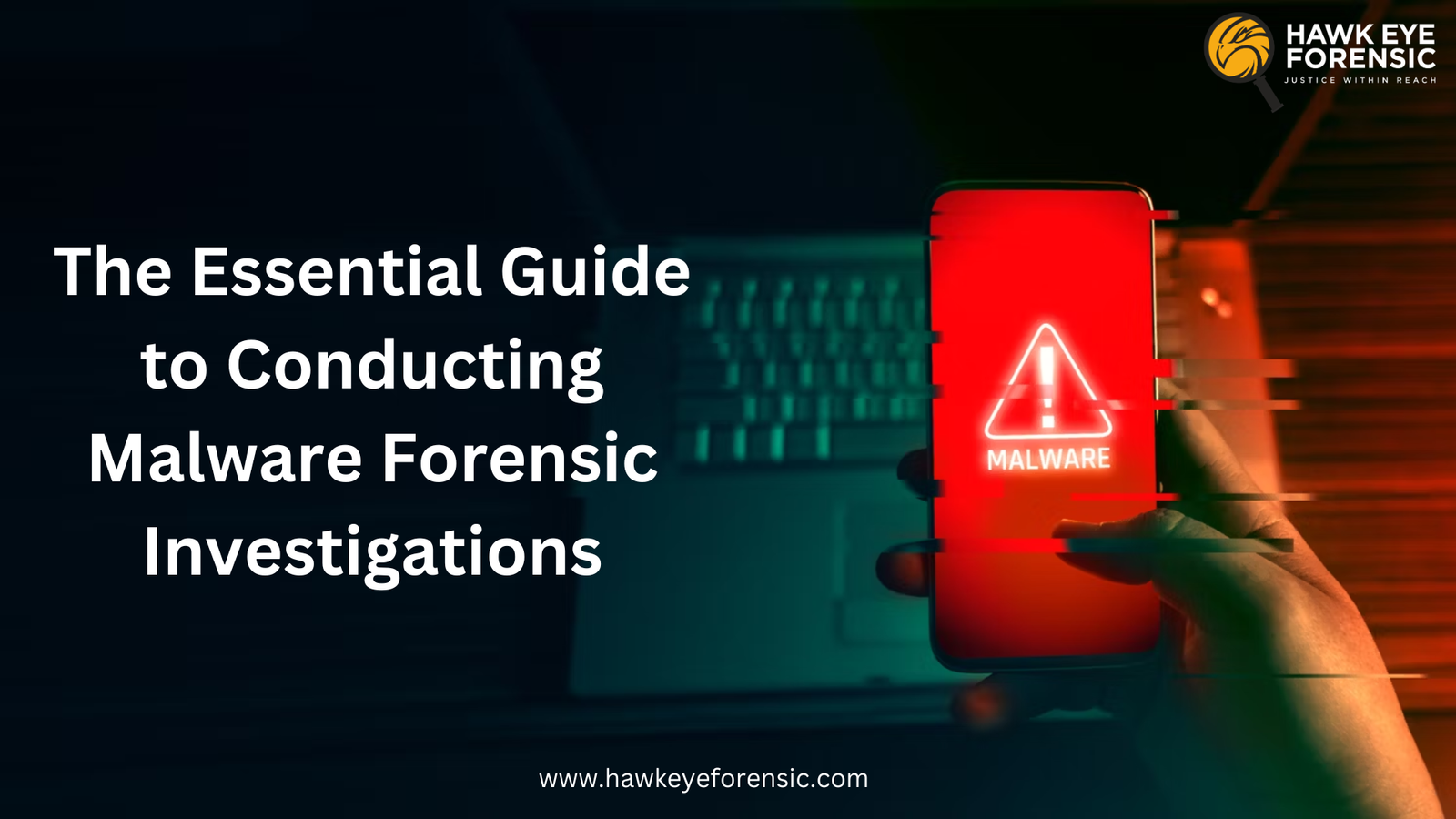
Best CHFI Training Course in Delhi
Are you looking to enhance your skills in cyber forensics and digital investigation? The Best CHFI Training Course in Delhi can be your gateway to a rewarding career in cybersecurity. ...


Mobile Forensic Omprakash Singh todayJune 5, 2025

In today’s ever-evolving digital threat landscape, malware is one of the most dangerous weapons in a cybercriminal’s arsenal. To combat this, cybersecurity professionals and digital forensic experts must rely on malware forensic investigations to trace, analyze, and neutralize malicious software. This essential guide breaks down the steps of forensic investigation, explains how to analyze malware, introduces the types of malware analysis, and recommends top tools for conducting effective malware forensics.
Malware forensics is the process of identifying, analyzing, and mitigating malicious software (malware) through structured forensic methodologies. The goal is not only to remove the malware but also to understand its behavior, source, impact, and how it entered the system.
Whether investigating malware or any cyber incident, a forensic analyst follows a systematic process. These are the five basic steps of a forensic investigation:
Recognize that a potential malware incident has occurred. Indicators may include abnormal system behavior, unauthorized access, data leaks, or security alerts.
Secure and preserve digital evidence in its original form. This involves creating disk images and memory dumps to avoid tampering or loss of volatile data.
Gather logs, registry entries, suspicious binaries, network captures, and any evidence related to the malware’s behavior.
This includes static and dynamic malware analysis techniques to examine the malware’s code, payload, communication patterns, and intended function.
Record the timeline of events, analysis results, conclusions, and recommendations. This report is critical for legal procedures and future prevention.
Review alerts from antivirus, SIEM, or EDR tools
Identify suspicious processes or files
Isolate affected systems
Use forensic imaging tools (like FTK Imager or EnCase)
Capture RAM for live analysis (e.g., using DumpIt or Belkasoft RAM Capturer)
Static Analysis: Examine malware binaries without executing them
Dynamic Analysis: Execute the malware in a sandboxed environment to observe real-time behavior
Use tools like Ghidra or IDA Pro to disassemble and study the code
Analyze network traffic with Wireshark
Look for persistence through registry keys, startup scripts, or scheduled tasks
Understanding the types of malware analysis helps forensic experts choose the right method based on the investigation’s complexity:
Analyzes the binary without execution. It’s safer and faster but may miss dynamic behaviors. Tools: PEStudio, Exeinfo PE.
Runs the malware in a controlled lab environment to observe behavior. Tools: Cuckoo Sandbox, Any.Run.
Focuses on malware residing in RAM. Useful for rootkits and fileless malware. Tools: Volatility, Rekall.
Monitors malware impact on the system: file creation, registry modifications, network connections, etc.
In-depth analysis to break down how the malware is coded. Useful in advanced persistent threats (APT) and ransomware cases.
Here’s a list of essential tools used by professionals in malware forensic investigations:
| Tool | Use Case |
|---|---|
| Volatility | Memory forensics and process analysis |
| Cuckoo Sandbox | Automated dynamic malware analysis |
| Ghidra | Reverse engineering and static analysis |
| Wireshark | Network traffic analysis |
| PEStudio | Static binary analysis |
| FTK Imager | Imaging and data acquisition |
| IDA Pro | Advanced disassembler for code-level analysis |
| Any.Run | Cloud-based sandbox for real-time malware analysis |
| Sysinternals Suite | In-depth system monitoring and malware behavior tracking |
Conducting a malware forensic investigation requires a structured approach, a keen eye for detail, and proficiency with forensic tools. Whether you’re a beginner or an expert, understanding the steps, methods, and tools used in malware analysis is essential for defending against modern-day cyber threats.
With the right combination of knowledge, tools, and techniques, digital forensic investigators can uncover the story behind every malware incident—and help secure systems from future compromise.
Written by: Omprakash Singh
Tagged as: IncidentResponse, DynamicAnalysis, CyberForensics, ReverseEngineering, #MemoryForensics, CyberDefense, #HawkEyeForensic, InfosecCommunity, #MalwareAnalysis, APTAnalysis, #CyberThreats, MalwareInvestigation, ForensicScience, CyberInvestigation, MalwareForensics, DigitalForensics, ThreatHunting, ForensicTools, StaticAnalysis.

Digital Forensics Omprakash Singh
Are you looking to enhance your skills in cyber forensics and digital investigation? The Best CHFI Training Course in Delhi can be your gateway to a rewarding career in cybersecurity. ...


Copyright 2016-2025 all rights reserved by Hawk Eye Forensic.
Post comments (0)